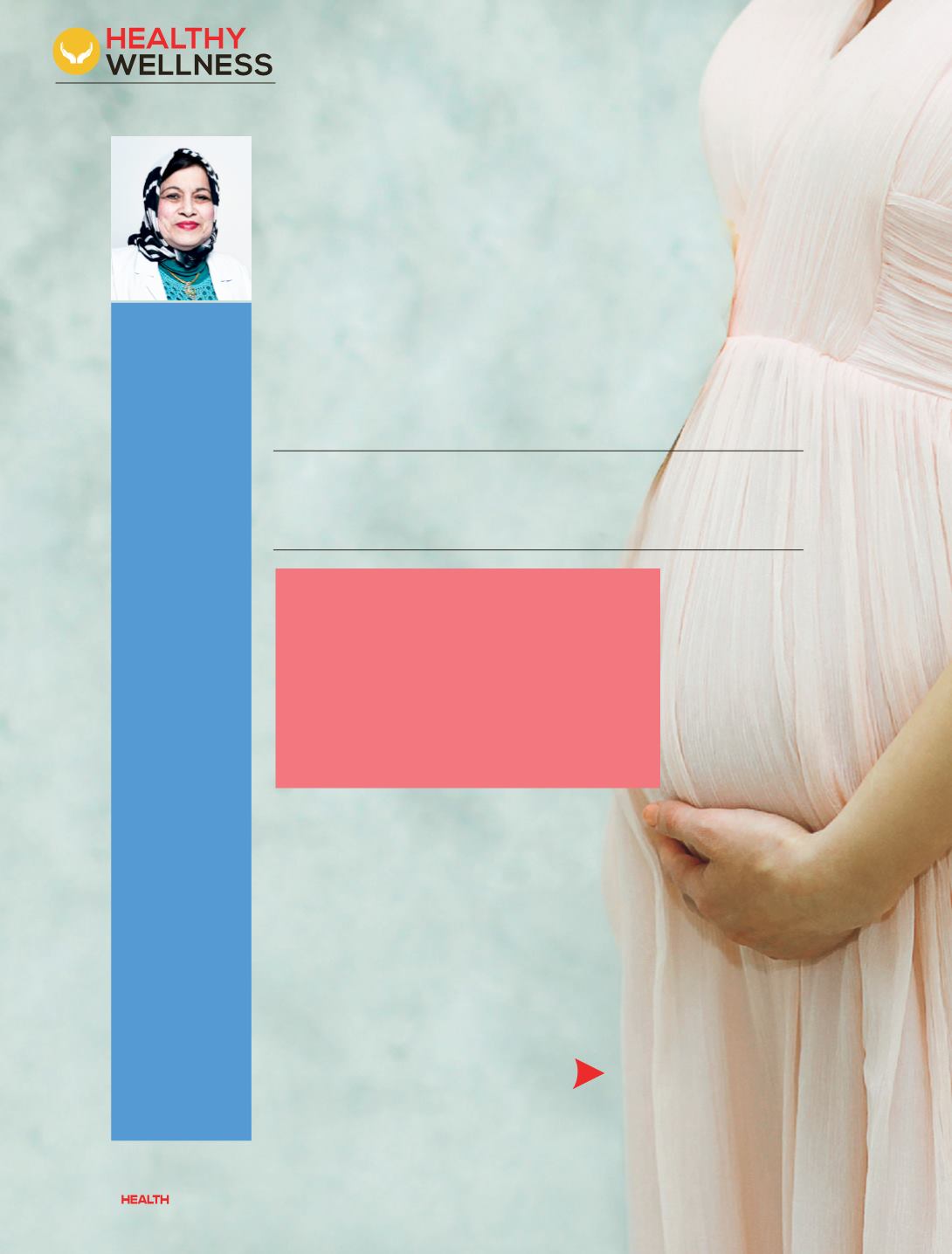

A Closer Look
at
Labor
Induction
While many pregnant women go into labor naturally, some women
need a little push. It could be they are overdue or have a medical issue
that requires giving birth soon. Whatever the reason,
HEALTH
looks
at what really happens during an induction and how it works...
Labor induction,
explains Prof.
Mawahib
Abd Salman,
Consultant,
Professor
Obstetrics and
Gynecology at
Gulf Medical
University
in Ajman is
the artificial
stimulation
of uterine
contractions to
help in childbirth.
“Induction of
labor has the
advantage when
given in true
medical reasons
and it may be
done potentially
to save the life of
a mother and her
baby,” she tells
and is a relatively
common
procedure but
also may be
associated with
implications
on fetal and
maternal
condition. “In a
life threatening
situation,
induction of labor
may be the best
choice,” she says,
however in a case
of labor induction
for social reasons
or convenience,
this may have an
impact on the
mother and baby.
The Commonly Accepted
Medical Reasons for Induction include:
• Post term pregnancy, for instance in the case of a
pregnancy overdue the 41st week.
• Intrauterine Fetal Growth Retardation (IUGR).
• There are health risks to the woman in continuing
the pregnancy (for instance if she has pre-eclampsia).
• Premature Rupture of the Membranes (PROM); this
is when the membranes have ruptured, but labor
does not start within a specific amount of time.
Disadvantages
According to Prof. Abd Salman, the procedure
has an impact on birth experience of women. “It
may be less efficient and is usually more painful
than spontaneous labor,” she tells and also
epidural analgesia and assisted delivery are more
likely to be required. Another disadvantage is
that induction of labor can cause more strain
than spontaneous labor.
With induction of labor, Prof. Abd Salman
indicates that it is reported that less than
two thirds of women gave birth without
further intervention, 15 percent required in
instrumental birth, and 22 percent required
undergoing emergency Caesarean section.**
(**Nice Guidelines)
24
May/June 2015















